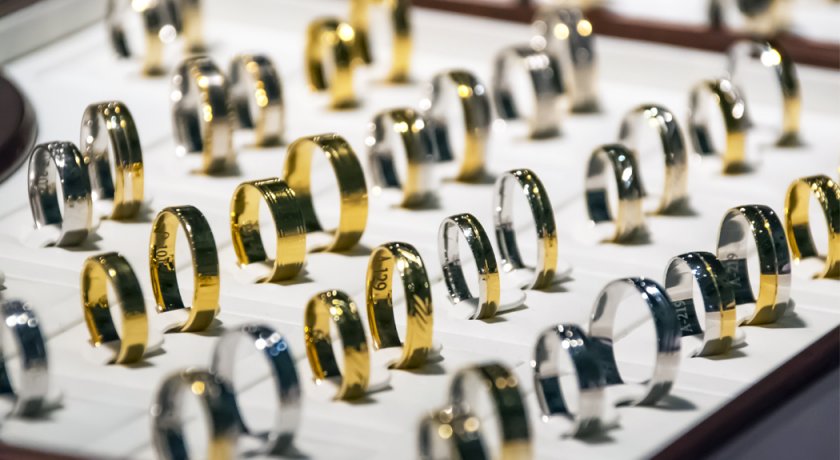A Guide to the Colours of Gold Jewellery

Nowadays, there are a range of colours of gold jewellery to choose from. The difference in colour is caused by the metals mixed with gold to make an alloy e.g. silver gives a whiter tone while copper gives a slight red tone.
The gold content of the items are still measured the same, in carats, no matter what colour they are. As the colour is made by the metal components, it will not chip or fade over time.
We’ve put together this helpful guide on the most popular colours of gold used in jewellery today.
Yellow Gold Jewellery.

Gold naturally has a warm yellow colour which has lead many cultures to believe that gold comes from the sun. Yellow is the most popular colour of gold today but is closely followed by white and rose. Some less common colours of gold jewellery are green, blue and purple.
As pure 24ct gold is too soft to be used for jewellery, it is alloyed with stronger metals to make it last longer. Zinc is usually used in the alloy to make yellow gold, meaning that the natural yellow hue is kept strong.
Because there is still a high content of pure gold in yellow gold, it is the most malleable type of gold jewellery. A lot of yellow gold items can be easily moulded into beautiful designs or have patterns engraved.
White Gold Jewellery.

To make white gold jewellery, pure gold is mixed with white metals to give it a silver tone. It was first created as a cheaper alternative to platinum but has recently become as popular as yellow gold in some countries.
90% pure gold and 10% nickel is the common formula for white gold, but magnesium and palladium are also used. After this alloy is made, it is then rhodium plated as there is still quite a strong yellow colour to the metal. As well as giving the gold as shiny, off-white colour, the rhodium also hardens the surface. This means that white gold is more durable and scratch resistant than yellow gold.
Rhodium is a rare silver metal that is very reflective and doesn’t react with air. However, the electroplating will eventually wear off, leaving the jewellery a dull colour. Thus, white gold jewellery often has to be rhodium plated every few years to keep it looking shiny and new.
Also, rhodium can be quite expensive which causing the price of white gold to increase. 9ct or 14ct yellow gold is most likely to be more affordable.
Rose Gold Jewellery.

When pure gold is mixed with copper, it is given a red hue. The amount of copper used in the alloy determines the darkness of the colour of the metal. For example, more copper causes a stronger red tone.
Gold with a pink hue has the lowest copper content while red gold has the highest, consisting of 50% copper. 75% gold and 25% copper make up rose gold, which is the most common in jewellery. As the alloyed metal is quite strong, rose gold is more durable than yellow or white.
Copper is fairly inexpensive, therefore making rose gold an affordable as well as elegant choice for jewellery. That is an advantage, but copper is a metal that can cause allergic reactions in some people. Make sure that doesn't include you before you buy!
